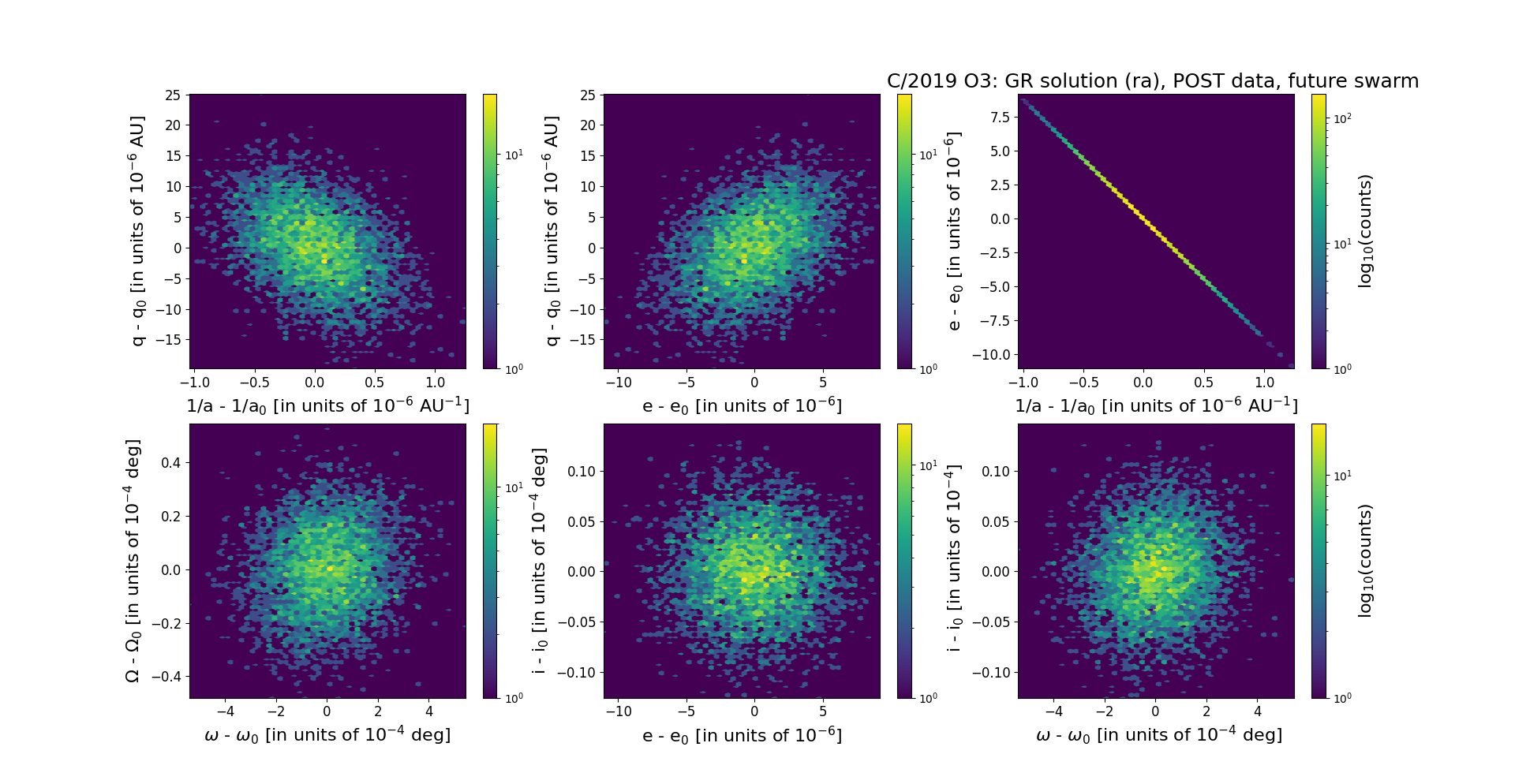C/2019 O3 Palomar
more info
Comet C/2019 O3 was discovered on 26 July 2019, more than 1.5 yr before its perihelion passage. Later a series of pre-discovery observations were found going back to 14 May 2019. In the moment of orbit determination, this comet was still observed.
Currently, solutions (GR and NG) given here are based on data span over 4.13 yr in a range of heliocentric distances: 9.61 au – 8.82 au (perihelion) – 10.1 au. Orbits based on pre-perihelion and post-perihelion data independently were also obtained.
This Oort spike comet suffers small planetary perturbations during its passage through the planetary system that lead to a more tight future orbit (see future barycentric orbits).
Currently, solutions (GR and NG) given here are based on data span over 4.13 yr in a range of heliocentric distances: 9.61 au – 8.82 au (perihelion) – 10.1 au. Orbits based on pre-perihelion and post-perihelion data independently were also obtained.
This Oort spike comet suffers small planetary perturbations during its passage through the planetary system that lead to a more tight future orbit (see future barycentric orbits).
| solution description | ||
|---|---|---|
| number of observations | 1613 | |
| data interval | 2021 02 25 – 2023 06 29 | |
| data arc selection | data generally limited to post-perihelion (POS) | |
| range of heliocentric distances | 8.82 au – 8.82 au (perihelion) – 10.06 au | |
| detectability of NG effects in the comet's motion | comet with determinable NG~orbit | |
| type of model of motion | GR - gravitational orbit | |
| data weighting | YES | |
| number of residuals | 3182 | |
| RMS [arcseconds] | 0.40 | |
| orbit quality class | 1a+ | |
| orbital elements (barycentric ecliptic J2000) | ||
|---|---|---|
| Epoch | 2334 08 14 | |
| perihelion date | 2021 03 05.72148844 | ± 0.00253897 |
| perihelion distance [au] | 8.81532840 | ± 0.00000597 |
| eccentricity | 0.99873966 | ± 0.00000296 |
| argument of perihelion [°] | 59.970434 | ± 0.000143 |
| ascending node [°] | 300.437545 | ± 0.000015 |
| inclination [°] | 89.860598 | ± 0.000004 |
| reciprocal semi-major axis [10-6 au-1] | 142.97 | ± 0.34 |
| file containing 5001 VCs swarm |
|---|
| 2019o3ra.bpl |
